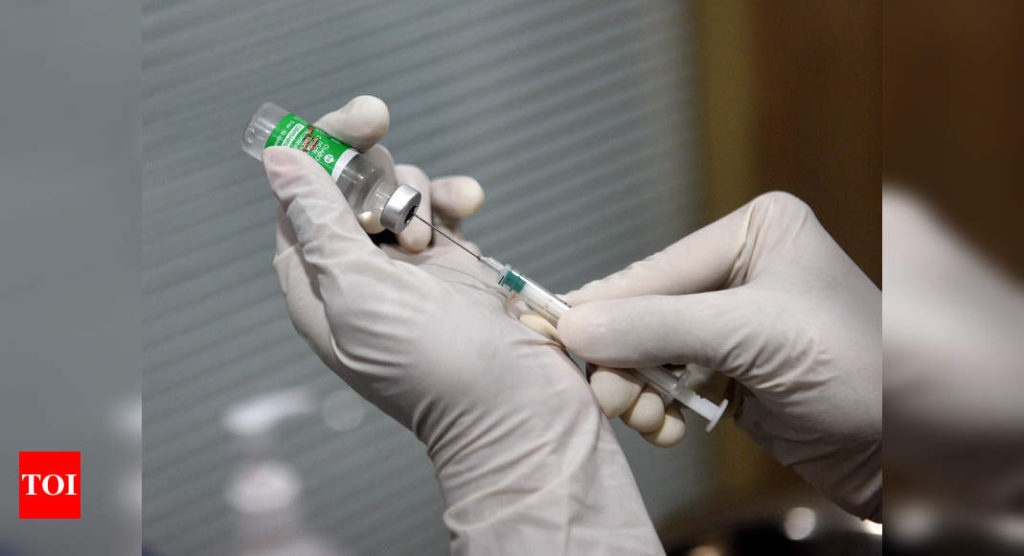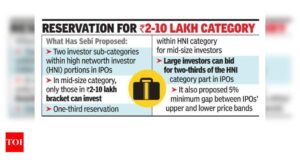‘Focus must be on long-term public-health spend, infra’ – Times of India

[ad_1]
NEW DELHI: Covid-19 pandemic has brought healthcare centre stage, highlighting how a health crisis can become a major economic and social challenge, the Economic Survey 2021 said suggesting the need for higher public spending and agile health infrastructure to be able to respond to pandemics.
The survey also points out that healthcare policy should not over focus on the recent phenomenon and rather continue to focus on long-term priorities. Drawing on the fact that countries with higher health spend have struggled to contain the pandemic, the survey concludes that better infrastructure may not assure that a country would be able to tackle a pandemic.
Union Budget 2021-22: Complete coverage
“Across all the states, the proportion of households with health insurance increased by 54 per cent for the states that implemented PM-JAY while falling by 10 per cent in states that did not. Similarly, the proportion of households that had health insurance increased in Bihar, Assam and Sikkim from 2015-16 to 2019-20 by 89 per cent while it decreased by 12 per cent over the same period in West Bengal,” it said.
“Healthcare policy must not become beholden to “saliency bias”, where policy over-weighs a recent phenomenon that may represent a six-sigma event,” the survey tabled in the Parliament on Friday said.
Underlining that though Covid is a communicable disease and has tested India’s health system preparedness, the survey pointed out that “71 per cent of global deaths and about 65 per cent of deaths in India are caused by non-communicable diseases”.
“The next health crisis may not possibly involve a communicable disease. Therefore, India’s healthcare policy must continue focusing on its long-term healthcare priorities,” it said.
Highlighting poor health outcomes, lack of access and high out-of-pocket expenditure as the persistent problems of the country’s health system, the survey said the richer states spend less of their GDP on healthcare but the limiting factor often is the lack of human resources.
“State-level variations in the density of health workers and the skill mix reflects that while Kerala and Jammu and Kashmir have a high density of doctors, states like Punjab, Himachal Pradesh and Chhattisgarh have a larger number of nurses and midwives but a very low density of doctors. Andhra Pradesh, Delhi and Tamil Nadu reflect a better balance of doctors and nurses and midwives,” it added.
It also stressed on the need for a sectoral regulator to monitor the healthcare sector, particularly because the private sector provides a bulk of healthcare services.
The survey also said that the focus on National Health Mission (NHM) must continue.
“The National Health mission (NHM) has played a critical role in mitigating inequity as the access of the poorest to pre-natal and post-natal care as well as institutional deliveries has increased significantly. Therefore, in conjunction to with Ayushman Bharat, the emphasis on NHM should continue,” the survey said.
According to the survey, health outcomes of the states that adopted Pradhan Mantri Jan Arogya Yojana (PM-JAY) improved when compared to the states that did not adopt the insurance scheme.
“From 2015-16 to 2019-20, infant mortality rates declined by 12 per cent for states that did not adopt PM-JAY and by 20 per cent for the states that adopted it,” the survey said.
‘Maha lagged behind Bihar, UP in Covid war’
Among states with large populations, despite having a lower population density than Bihar and UP, Maharashtra has underperformed the most in restricting the spread of Covid cases and in saving lives, the Survey shows. “This ultimately held India in good stead,” it said referring to the low numbers in UP and Bihar. Gujarat also did well in containing Covid, whereas Kerala, Telangana and Andhra have saved the most lives, it said.
The survey also points out that healthcare policy should not over focus on the recent phenomenon and rather continue to focus on long-term priorities. Drawing on the fact that countries with higher health spend have struggled to contain the pandemic, the survey concludes that better infrastructure may not assure that a country would be able to tackle a pandemic.
Union Budget 2021-22: Complete coverage
“Across all the states, the proportion of households with health insurance increased by 54 per cent for the states that implemented PM-JAY while falling by 10 per cent in states that did not. Similarly, the proportion of households that had health insurance increased in Bihar, Assam and Sikkim from 2015-16 to 2019-20 by 89 per cent while it decreased by 12 per cent over the same period in West Bengal,” it said.
“Healthcare policy must not become beholden to “saliency bias”, where policy over-weighs a recent phenomenon that may represent a six-sigma event,” the survey tabled in the Parliament on Friday said.
Underlining that though Covid is a communicable disease and has tested India’s health system preparedness, the survey pointed out that “71 per cent of global deaths and about 65 per cent of deaths in India are caused by non-communicable diseases”.
“The next health crisis may not possibly involve a communicable disease. Therefore, India’s healthcare policy must continue focusing on its long-term healthcare priorities,” it said.
Highlighting poor health outcomes, lack of access and high out-of-pocket expenditure as the persistent problems of the country’s health system, the survey said the richer states spend less of their GDP on healthcare but the limiting factor often is the lack of human resources.
“State-level variations in the density of health workers and the skill mix reflects that while Kerala and Jammu and Kashmir have a high density of doctors, states like Punjab, Himachal Pradesh and Chhattisgarh have a larger number of nurses and midwives but a very low density of doctors. Andhra Pradesh, Delhi and Tamil Nadu reflect a better balance of doctors and nurses and midwives,” it added.
It also stressed on the need for a sectoral regulator to monitor the healthcare sector, particularly because the private sector provides a bulk of healthcare services.
The survey also said that the focus on National Health Mission (NHM) must continue.
“The National Health mission (NHM) has played a critical role in mitigating inequity as the access of the poorest to pre-natal and post-natal care as well as institutional deliveries has increased significantly. Therefore, in conjunction to with Ayushman Bharat, the emphasis on NHM should continue,” the survey said.
According to the survey, health outcomes of the states that adopted Pradhan Mantri Jan Arogya Yojana (PM-JAY) improved when compared to the states that did not adopt the insurance scheme.
“From 2015-16 to 2019-20, infant mortality rates declined by 12 per cent for states that did not adopt PM-JAY and by 20 per cent for the states that adopted it,” the survey said.
‘Maha lagged behind Bihar, UP in Covid war’
Among states with large populations, despite having a lower population density than Bihar and UP, Maharashtra has underperformed the most in restricting the spread of Covid cases and in saving lives, the Survey shows. “This ultimately held India in good stead,” it said referring to the low numbers in UP and Bihar. Gujarat also did well in containing Covid, whereas Kerala, Telangana and Andhra have saved the most lives, it said.
[ad_2]
Source link







